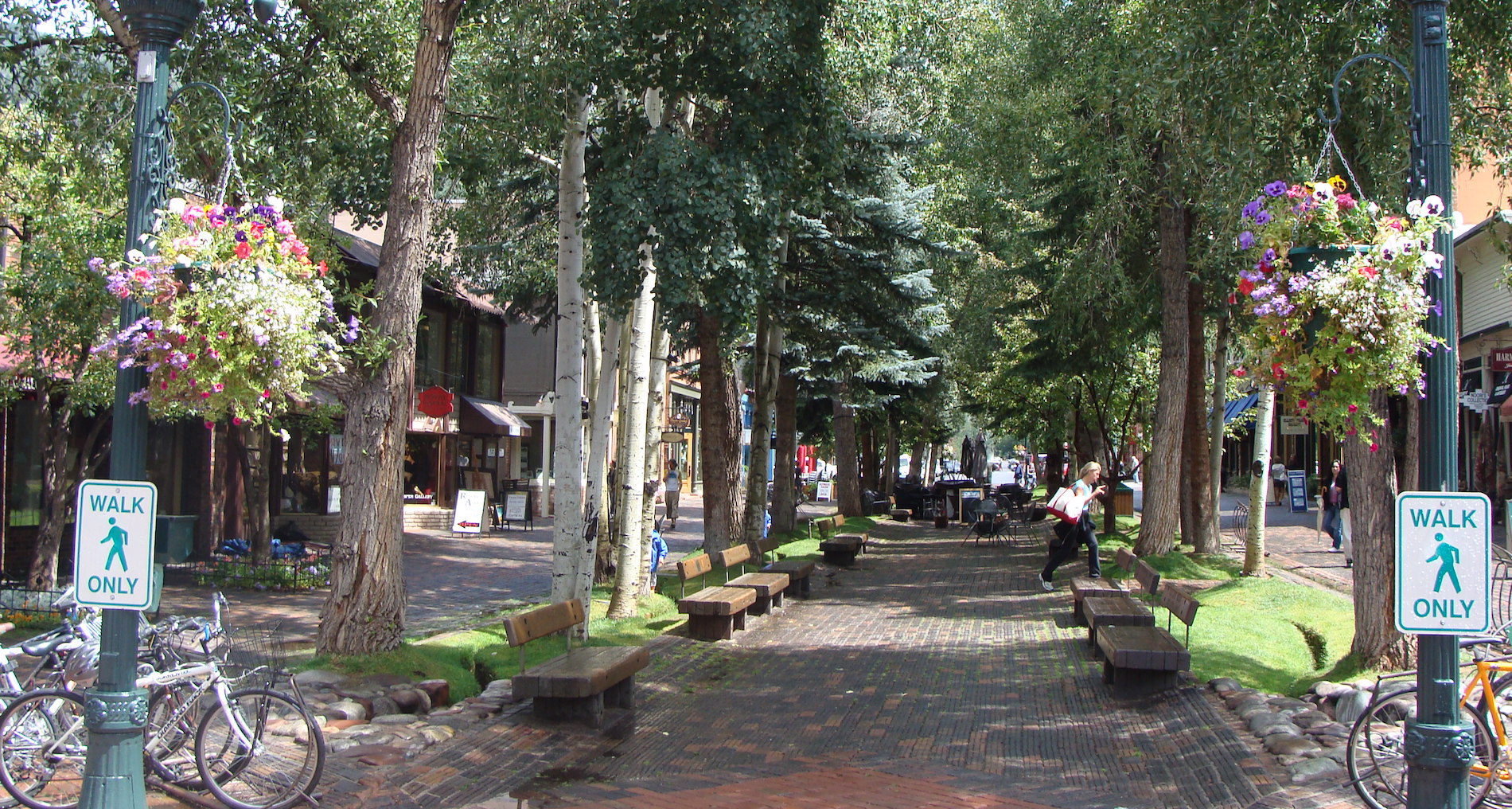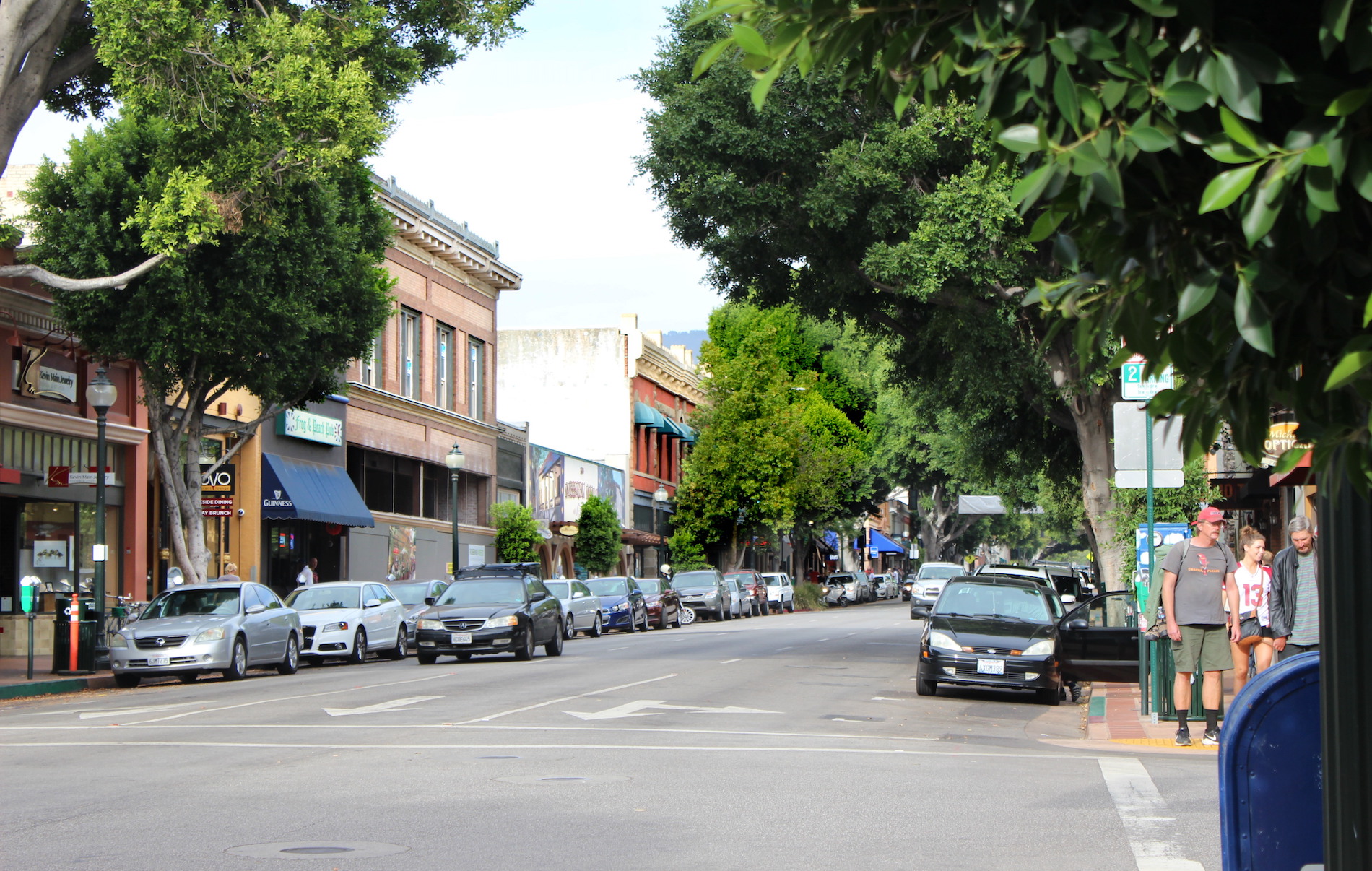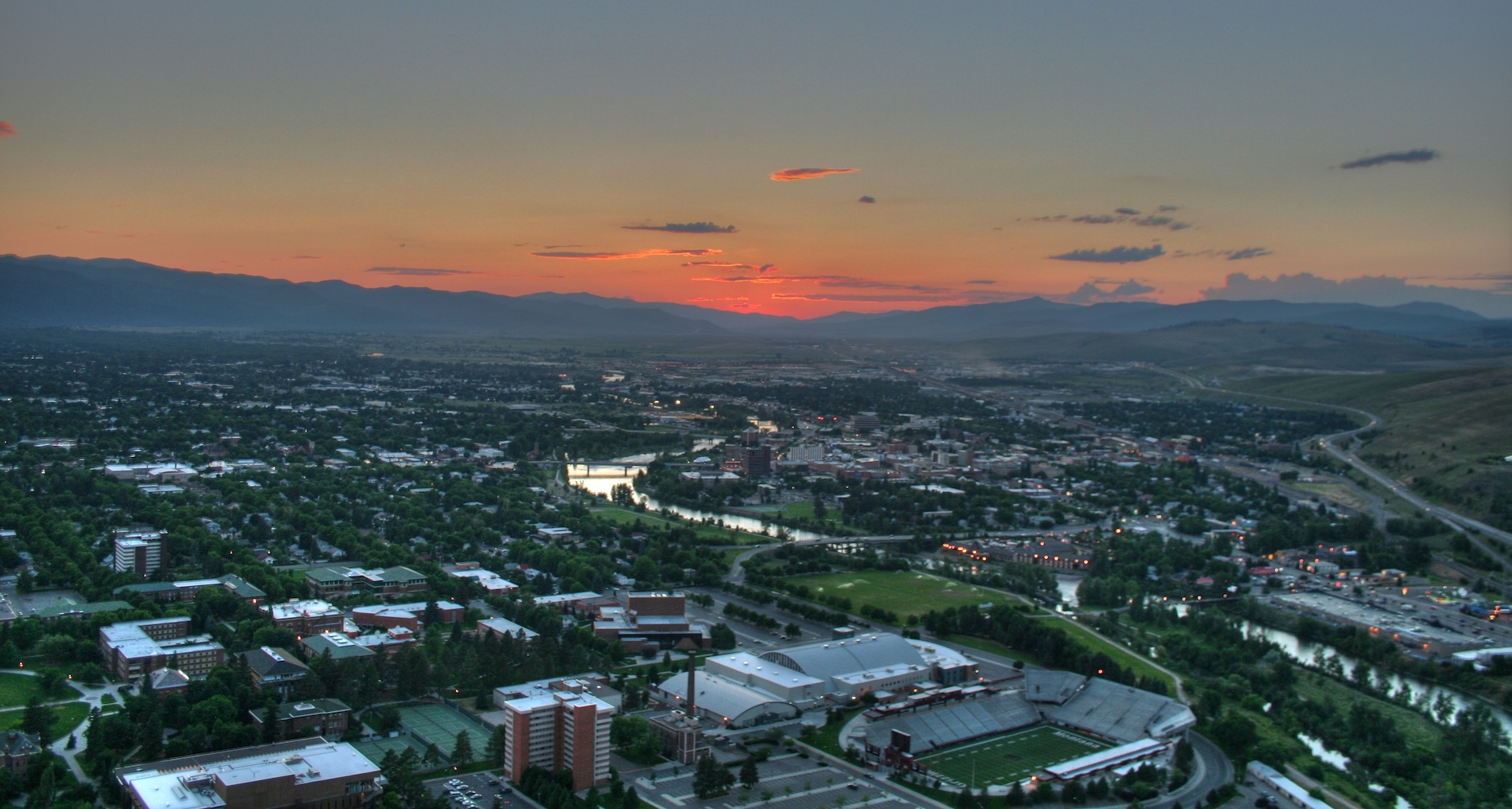We highlighted the efforts of eight municipalities enacting climate policies across the US. Click the map below to read more about each municipality.
As federal climate action continues to lag, states are taking the lead in proposing and championing comprehensive climate policy. But sometimes passing strong bills at the state level can be equally as difficult, and we don’t have any time to waste. The overwhelming scientific consensus is that we need to drastically reduce emissions in order to reduce and prevent the worsening effects of the climate crisis, including economic decline, severe public health crises, and increased global conflict and resource scarcity.
Municipalities, understanding local threats and risks, have taken the opportunity to lead on climate action, and do their part in reducing emissions.
Climate policy at the city level is not inconsequential. Take Chicago, a city that emits 33 million tons of carbon emissions each year — a number larger than that of 10 U.S. states. Implementing a carbon price in Chicago, or any sort of climate policy, would have a massive effect on emissions.
But even smaller cities still have an incentive to reduce their emissions. The average American produces about 21.8 tons of carbon each year, meaning that even in a small town, such as Dubois, Wyoming, which has a population of only 974 residents, 21,233 tons of carbon are released into the atmosphere every year. Any sort of policy to decrease that number can have a very large impact.
There are cities like Boston, Boulder, New York, and San Francisco, that are well known for their climate efforts. These municipalities are located in states and regions that allow for very progressive climate policy to pass. While these cities are leaders in climate action, there are also a wide range of municipalities in regions that may have less resources to address climate change, but are still working hard to do so.
In this article, we highlight climate action in some of the lesser known cities and municipalities that are leaders in their region. We spoke with individuals in these places that are working hard to make an impact — here is what we learned.
1. Athens, Ohio
A small town in the heart of southeast Appalachian Ohio has also been leading the conversation on municipal carbon pricing. In 2018, Athens passed a carbon fee through a referendum, through which 76% of the population voted in favor of the measure.
The fee is placed upon utilities, set at a rate of 2-mills per kilowatt hour ($0.002/kWh), which adds up to a very small increase of $1.60-$1.80 on an average household’s utility bill each month, and funds primarily solar projects.
“It was pretty impressive for the citizens of Athens to take a bold step like this and acknowledge that yes, we are willing to pay this extra fee, because we want to improve our sustainability and we want to continue to adhere to the Paris Climate Accord,” Mayor Steve Patterson of Athens told Climate XChange.
Including the public in the drafting of the carbon fee was a crucial part of the process. There were many town halls and public forums leading up to the referendum that paved the way for the fee to get such widespread support.
“We really used (public forums) as an opportunity to engage with the community, and they brought up a lot of interesting discussion points that helped people both understand the carbon fee as a concept but also raised discussions around what type of solar projects do we want to see,” Sarah Conley-Ballew, the Program Director for Rural Action Sustainable Energy Solutions who helped create the text and build public momentum for the referendum, told Climate XChange.
Households will begin paying the fee in June 2020, and deciding where the revenue is going to go is the next step. While it was clear from the beginning that all of the revenue will go towards solar projects, deciding on which projects to fund includes a public process. Soon, the city will hold another public forum, where citizens will discuss whether to use the funds for a 2 to 3 megawatt solar project that will power the city’s water treatment plan, community center, and new public pool.
With a population of 24,000 citizens in the center of a coal-dominated region, Athens displays how a carbon fee can gain support and community buy-in when people understand the value they stand to gain, no matter the size, location, or geography of a city.
2. Aspen, Colorado
Aspen was the first city in the world to introduce a carbon fee in 1999, called the Renewable Energy Mitigation Program (REMP). It requires either onsite mitigation with renewables or charges a ‘fee-in-lieu’ on new buildings and large remodeling projects that consume excess energy. REMP uses those revenues for grants and rebates that fund energy efficiency and renewable energy measures. Since 2011, when current records were established, $2,864,839 in energy costs have been saved each year, and 19,166 metric tons of carbon emissions were avoided by projects that leveraged REMP dollars
The program has clear results — Aspen met their goal of achieving 100% renewable electricity in 2015, and is on the path to meeting other greenhouse gas emissions goals to reduce 80% of emissions below 2004 levels by 2050. This has in part been possible due to the funds generated by REMP, which are awarded to organizations and businesses through a competitive grant process administered by the Community Office for Resource Efficiency and the availability of REMP-funded grants has spurred implementation of many innovative efficiency and renewable projects throughout the regions.
Chris Menges, Climate and Sustainability Programs Administrator for the City of Aspen, told Climate XChange that “having access to those resources has allowed the community to develop and implement a wide variety of innovative and impactful efficiency and distributed renewables projects over the past 20 years.”
REMP-generated revenues are awarded to community organizations through a competitive grant process every year that evaluates project ideas on criteria such as energy and GHG savings to innovation and financial need.
Menges mentioned that Aspen’s work with REMP has garnered attention in other municipalities, and that local government action is helping to inform and accelerate action at the state level. “Our community’s strong support for climate and clean energy provides opportunities to proactively engage with our peers to inform state and federal policy,” Menges told Climate XChange, as he described the Colorado Communities for Climate Action (CC4CA), a coalition of 34 local governments in Colorado that have worked together to become a powerful lobbying force for clean energy initiatives at the state level. “Many local governments including Aspen have taken the approach of demonstrating leadership in their own communities, and using that earned credibility to advocate for state policy that accelerates emission reduction, benefits communities and ensures a just transition.”
This is part of a bigger pattern of change, and stresses how important it is for cities to act. Coalitions of local governments can shift and influence state policy in this way, moving forward action at a larger scale. Although Colorado has yet to pass a carbon price, CC4CA has been successful in moving forward other policies, such as a greenhouse gas inventory bill that passed in 2019, which the coalition heavily lobbied and testified for.
Aspen is a great example for cities looking to create effective environmental policies, as one of the only cities in the world to put a price on carbon emissions, which has been extremely successful in reducing emissions and financing local renewable energy ventures.
3. Orange County, North Carolina
In North Carolina, Orange County is leading the way on climate. Last June, the municipality passed the Orange County Climate Action Tax, a measure that increases the county’s property tax by a quarter of a cent for every hundred dollars to fund equitable sustainability projects. “The county has a long history of climate action and sustainability leadership, and this will help accelerate the efforts,” Brennan Bouma, the Orange County Sustainability Coordinator, told Climate XChange.
Passing the tax was not easy, according to Bouma, and truly came down to Commissioner Mark Dorsin’s swing vote, who wanted to ensure that the policy would incorporate and assess racial equity. With his support, and the promise that racial equity would be a major consideration for projects, the tax was passed in June 2019. Bouma assisted in creating the criteria to determine which projects would be funded, and was clear that racial equity is the primary focus of these new sustainability projects.
Bouma also emphasized the importance of collaboration in climate efforts. In 2019, he helped to form the Orange County Climate Council, a broad coalition of government and school board representatives, students, and justice groups that are working to tackle climate change by sharing best practices and identifying opportunities to work together.
“The idea is that the group is going to be sharing among each other what everyone’s doing on climate change and put it into one common database. Then, we can use that database to identify areas that are gaps, or areas where we can help one another. Comparing those actions against national standards, we aim to accelerate our actions jointly,” says Bouma.
Climate efforts in states such as North Carolina, even in more progressive areas such as Orange County, are not easy to achieve. In beginning these two recent measures, there was a lot of pushback, but having an advocate such as Commissioner Mark Marcoplos, who proposed the tax, was essential. “Finding champions and supporting them is helpful,” says Bouma, who mentioned that support from elected officials “has been critical for the climate council effort and the climate action tax.”
4. Mosier, Oregon
No other municipality exemplifies how big of an impact even the very smallest of towns can have when they are dedicated to making a difference better than the town of Mosier, Oregon.
In 2016, the town (with a population of 458) faced catastrophe when a Union Pacific train transporting Bakken crude oil derailed, leaving the entire town in the blast zone. The damage was costly to the small town — elementary school children and residents were forced to evacuate, groundwater was contaminated, and the city lost water and sewer for several days. It was months before the sewage treatment plant, which miraculously caught 25,000 gallons of the crude, was back in service.
The oil spill was an eye-opening moment for residents of Mosier, and catalyzed climate action that moved all the way up to the state level. “It put us on the front lines of this whole discussion of fossil fuel infrastructure development,” Mayor Arlene Burns told Climate XChange.
At the same time Mosier underwent this disaster, a proposal to construct the largest terminal for Bakken crude oil in U.S. history in Vancouver, Washington was on the table. The town of Mosier was not going to let that happen.
“Mosier, our little town, stepped up to be the voice and the story to oppose the Bakken crude shipment. Basically, momentum from the awareness created was able to swing the needle in the other direction, and with a whole lot of effort from a whole lot of people, we were able to stop this terminal from being built,” said Burns.
Mosier has continued to be active at the state level — Mayor Burns often testifies for state legislation that will protect the Oreganian environment from the dangers of fossil fuels, and particularly crude oil, and has been very successful in doing so.
Burns went on to join the Chicago Climate Charter, a group of cities that have pledged to reduce emissions through collaboration and communication. She also joined Climate Mayors, a coalition that allows for pooled resources to assist small towns with different initiatives. For example, a new electric vehicle initiative allows bulk purchasing so that Mosier can get electric vehicles at the same price as cities such as New York City, enabling more funding for infrastructure. “This is sending a message to the industry, which is great, and is also making things more affordable for the little guy,” says Burns.
Collaborating with other cities and municipalities has given the small town a big voice, and has allowed Mosier to impact policy at all levels.
The town also has its own initiatives to combat climate change, including a ban on plastics, styrofoam, and straws, an agreement to change street lights to more energy efficient bulbs as they expire, and a plan to build a new, net-zero community hall and fire station. The city council is also working on language to declare a climate emergency in the town.
Since facing climate disaster, Mosier has stepped up to the plate and made a difference, not only in the confines of its local community, showing how no town is too small to make an impact.
5. Hyattsville City, Maryland
Hyattsville City is another municipality that has taken strong measures to address climate change. The city recently passed Community Choice Aggregation (CCA), a program that gives municipalities the power to provide electricity for their residents from an alternative supplier, allowing the city to choose greener, cleaner sources to power the grid.
City Councillor Danny Schaible helped to push through the measure, and told Climate XChange, “what I liked about CCA is that it would provide us a tool to dramatically reduce our carbon footprint, and can be done at a capacity that doesn’t cost anything.” This program will be implemented depending on state level legislation proposed this session, which would allow local governments to implement the policy.
Hyattsville has also focused their efforts on electric vehicle infrastructure to reduce automobile emissions. The city was the first to acquire a completely electric police fleet, and has free charging stations all around the city.
Schaible is now looking towards the future when it comes to electric vehicles. Since the majority of Hyattsville residents live in multi-family complexes, such as apartments or condominiums, they are currently dependent upon the property owner to supply any electric vehicle charging in parking lots. Schiable told Climate XChange, “I would like to find a way to regulate that and to maybe put in a mandate that if you have an apartment complex, a certain percentage of spots should be for electric vehicle charging.”
Lastly, Hyattsville has made great progress in offering composting for its residents. The city has just made composting a universal opt-in program for all residents that the city supplies trash collection to. Hyattsville already provided universal yard waste pickup, and this type of waste gets taken to the same facility as compost. “There were efficiencies that we never understood we could benefit from,” Schiable said, as he helped the city transition to composting. While not all residents may currently be utilizing the program, Schiable someday hopes to incentivize this through a pay-as-you throw trash collection model that would charge citizens less to get rid of compost and recycling than it would regular trash.
A huge takeaway from the work done in Hyattsville is that there is always low-hanging fruit in terms of what cities can do in order to take actions, which can have important and meaningful impacts at the local level.
6. San Luis Obispo, California
Although it’s possible for cities to take action without state leadership, San Luis Obispo has thrived from using the resources of California’s cap-and-invest program and the opportunities for policy that it has provided.
San Luis Obispo has an ambitious goal to reach carbon neutrality by 2035, which it’s on track to achieve. “We have really ambitious climate action goals and targets that are serious, and we’re taking them seriously,” Chris Read, the Sustainability Manager for the city told Climate XChange.
To reach these goals, the city has a long list of plans and initiatives. The newest is Community Choice Energy, a program that began in January of this year that links San Luis Obispo to Monterey Bay Community Power, which provides 100% clean electricity to all residents who participate. Similar to the proposed CCA program in Hyattsville, Community Choice Energy gives the local community greater control over their energy supply, allowing for more competitive and stable electricity rates, and accountability within energy markets.
The program also stops the building of new fossil fuel infrastructure, and increases environmental standards for all new buildings in the state by introducing updated building codes. If new buildings do use fossil fuels, they are required to offset all of their emissions, and also prewire the building for electric appliances.
Citizens have the option to opt out of Community Choice Energy, but currently 97.8% of homes and businesses have chosen to participate. “Our participation rate is really good, and we’re really excited about what it means for our community,” Read said.
Read also emphasized the importance of collaboration in making progress. San Luis Obispo is a part of the Urban Sustainability Directors Network, a group of local representatives from cities across the country who share best practices and coordinate priorities.
“It’s a space for us to coordinate and collaborate, and we’ve worked on a number of projects with other directors and sustainability managers throughout the US,” mentioned Read, who emphasized how helpful joining forces can be for municipalities all around the country.
7. Madison, Wisconsin
In states that have less opportunities to pass climate policies, local officials have taken the lead on improving sustainability and introducing climate measures. In Madison, Wisconsin, a goal to reach 100% renewable energy was set in 2017, with a resolution to meet this objective by 2030 for city operations and 2050 for the community. Madison was the first city in Wisconsin to set such a goal, and other cities have since followed its leadership.
To meet targets, Madison has a series of measures addressing some of the inefficiencies and opportunities in the community. These include ordinances on new building projects to ensure they are LEED certified, as well as improvements within water utility infrastructure. The city has also taken measures to electrify its transportation fleet, with three electric buses currently piloting the program.
Renewable energy markets, particularly in the solar sector, have increased greatly in the past few years in Madison, and will continue to expand through installations for renewable energy. “I think that setting that goal back in 2017 when it started got a lot of projects off the ground,” Stacie Reece, the first Sustainability Program Coordinator for the city, told Climate XChange. She highlighted the fact that 37% of the electricity load is now sourced from renewables, a big stride for the city.
Reece also told us about Madison’s deal with Madison Gas and Electric, the main energy provider in the city, for a renewable energy rider project that will create 7 megawatts of solar energy to be used by the city and school buildings. When Madison first began to introduce renewable energy projects in 2017, the city faced some opposition from the company, which made it much more difficult to pass projects. But this changed when residents of Madison started to really care about the issue, and became vocal about it.
“There was a lot of activation in our community, when our community came out and said no, you can’t do this,” says Reece, “And that really opened up the opportunity (for the project).” Public opinion is a huge force in driving both policies and the actions of businesses, and it’s evident here what difference that can make.
“I consider myself an ambassador to the community. I continually go out into the community and talk about the challenges that we are up against, educate them on the policy implications and the legislative implications and the regulatory implications on things that maybe aren’t taking us as fast and as far as some other communities.”
Public activism can have a huge impact on a community, and can help push for more sustainable policies and practices. Other cities can learn from the work of Madison in this way, and can learn to harness the power of the public to drive change.
8. Missoula, Montana
Montana is another state where cities have taken the lead on passing strong climate policy that pave the way for a cleaner, greener future. Missoula began with a goal in 2013 to make city operations carbon neutral by 2025, and met their first interim goal to reduce emissions by 10% of 2008 levels in 2015.
To reach their goals, the city has initiatives grouped into 3 areas: fleet and facilities, internal policies and practices, and renewable energy and offsets. Although some offsets will be purchased to reach this goal, the primary focus is in local renewable projects. “We really wanted to prioritize longer term investments and renewable energy, and really wanted to focus those investments on local impacts,” said Chase Jones, Energy Conservation Coordinator for the city.
In 2015, this neutrality goal was expanded unofficially to include the entire community, with the objective of carbon neutrality by 2050. The city worked with community groups to create the Community Climate Smart Action Plan, which offers comprehensive solutions in all areas and sectors to reduce emissions. “With this expanded scope and boundary, we were able to expand our focus areas,” Jones told Climate XChange. Using community conversations, the city decided upon 12 new areas to focus initiatives. Including the public sphere within these talks was crucial in ensuring that renewable energy projects are applied in a way that benefits the greater Missoula community.
On top of these 12 priority subjects, the city also focused on better transportation techniques. Reducing emissions in the transportation sector faces serious challenges in Missoula, considering the more rural nature of the area and the city’s smaller population of 72,500. To address this, the city worked with the community to create Missoula in Motion, a group that helps both businesses and individuals reduce transportation emissions. It includes everything from offering incentives for carpooling, to educating citizens on their transportation options or making sure that bike lanes are included in new road developments.
For other cities in similar situations that want to pass smart climate policies, Jones said, “I would say it’s important to work with elected leaders as well as community leaders and build a broad coalition in your community to develop a vision and develop goals that reflect the values of your community, and have those goals be based on good science and data.”
Important takeaways
Cities in all parts of the country can follow the lead of these municipalities, and others like them, to reduce their own carbon footprints and advance climate solutions locally. Doing so also has great benefits for their communities — becoming energy independent, having more resilient power grids, having cleaner air and water, and boosting the economy through new clean market jobs are all great co-benefits of taking strong climate action.
But it is important that cities understand the role they play in protecting the planet. The climate crisis is not something that can be solved at one level. Action is needed from international, national, regional, and local actors if there is hope for carbon neutrality by 2050.
If your town or city has yet to enact climate mitigation or adaptation policies, it is still possible. It is easy to call or email your mayor and city councilors and advocate for these types of solutions. Policy ideas, especially at the local level, stem from public opinion, and individuals can really make a big impact by engaging with policymakers and standing up for their beliefs.
Every step that municipalities and cities take towards emissions reduction goals makes reaching them more feasible, and can make a big difference in forwarding smarter policies and practices across the country.
















